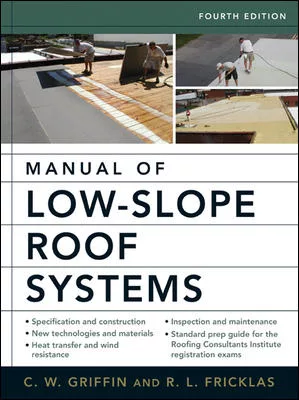Workforce Development
Gen Z, Roofing's Workforce of Tomorrow, Gathers at SkillsUSA
A surge in Gen Z participation at SkillsUSA offers a hopeful sign for construction's labor pipeline — and the future of roofing

Chelle Travis, executive director of SkillsUSA (center), with competitors on the exhibit floor of the 61st National Skills Conference in Atlanta. Travis underscored the urgency of closing the nation’s skilled‑trade labor gap.
Image: Bryan Gottlieb/Roofing Contractor
The roar of nail guns, chop saws and other tools of the trade echoed through Pavilion A of the Georgia World Congress Center last week as more than 6,500 state-level champions converged for the 61st annual SkillsUSA National Skills Conference.
Commercial roofing, one of the 130 occupational competitions — including culinary arts and welding — reached its highest participation in the four years since it was introduced as a category.
Shane Muncy, the National Roofing Contractors Association’s (NRCA) director of workforce development, whose career in roofing dates back more than 30 years, said events like SkillsUSA are key drivers in recruiting the next generation of tradespeople, alongside expanded access to career technical education.
“We've seen [huge interest] in the past few years because of the exceedingly expensive costs of a four-year college,” he shared during the first day of competition this year. “These individuals can get involved with skills, get into a trade and go straight to work … and [earn] good pay quickly and not be in debt for a number of years with student loans and such.“
In Atlanta, competitors had already won local and state honors before tackling a mock-up low-slope roof under timed conditions, blending a written exam with hands-on tasks that mirror real-world demands.
Founded in 1965 to champion career and technical education, SkillsUSA represents nearly 400,000 students and instructors in middle schools, high schools and postsecondary institutions nationwide.
Roofing’s labor shortage, of course, mirrors the larger construction labor crunch, and SkillsUSA is but one arrow in the construction industry’s quiver as it addresses the issue.
Chelle Travis, the executive director of SkillsUSA, noted the urgency of replenishing the dwindling number of skilled trades within several industries, notably construction, which faces a deficit of nearly half a million workers.
“So, there's a huge skills gap, and construction alone is approximately 500,000 nationwide … [and] we're also seeing many retire from the skilled trades,” Travis said.
“Many generations with a lot of that institutional knowledge are now [retiring] … There's an elevated need and also awareness of what [SkillsUSA] is doing and what these students are doing in their skills and with their skills.”
Travis noted that in its entirety, 2025 shaped up to be the event's most well-attended, with more than 18,000 visitors, along with the record number of secondary and post-secondary competitors.
Still, the industry is embattled on several fronts, including the current state of immigration policy, tariff uncertainty and historically higher borrowing costs, among others.
 Competitors are working on the low-slope mock-up at SkillsUSA.
Competitors are working on the low-slope mock-up at SkillsUSA.Image by Bryan Gottlieb/Roofing Contractor
It’s Not Work, It’s a Career
According to Associated Builders and Contractors (ABC), over 240,000 construction positions remained unfilled in April, despite the sector adding 4,000 jobs in May and unemployment falling to 3.5 percent, which is well below the national average.
The U.S. Bureau of Labor Statistics’ (BLS) Job Openings and Labor Turnover Survey shows that the construction industry registered 248,000 job openings in April, down 3,000 from March and 78,000 from April 2024, according to ABC.
A separate survey by the NRCA found that 493,000 construction jobs were vacant early in 2024, mainly due to a dearth of qualified craft workers, which delayed projects and increased labor costs.
Construction workers were laid off at a rate faster than they quit; the layoff/discharge rate in April was 2.1%, while the quit rate was 1.8%.
“The rates of hires, layoffs and quits are all low by historical standards, and industrywide job openings have fallen 45% since reaching an all-time high in December 2023,” Anirban Basu, chief economist at ABC, said in describing a labor market that remains tight despite the headline figures.
His assessment reflects a paradox: fewer openings do not equate to an abundance of available talent, but rather to sustained low churn among an already slim pool of skilled workers.
According to the Associated General Contractors of America (AGC), nearly eight in 10 firms report difficulty filling hourly craft positions, from carpentry to HVAC, as demand for projects outstrips available talent.
Collar Color: White vs. Blue
For prospective workers weighing career paths, lifetime earnings data provide a compelling framework for financial decision-making. A closer look at earnings reveals why many young people and their families continue to prefer four-year degrees, despite rising tuition and debt.
BLS figures for 2023 show median weekly earnings of $899 for those with only a high school diploma, rising to $1,493 for bachelor’s degree holders.
The Georgetown University Center on Education and the Workforce found that workers with only a high school diploma earn a median of $1.6 million over a lifetime; those with an associate degree, $2.0 million; and bachelor’s degree holders, $2.8 million.
However, specialized trades can bridge this gap. Plumbers, pipefitters, and steamfitters earn a median of $61,550 annually — roughly $2.46 million over a 40-year career, according to the Bureau of Labor Statistics' latest data set; roofers make a median of $50,030, or about $2.0 million over the same period.
Skilled trades also provide on-the-job training and apprenticeships that help avoid student loan debt. Anthony Carnevale, director of Georgetown’s workforce center, notes that “30 percent of two‑year degree holders earn more than those with four‑year degrees in the short term.”
Bachelor’s graduates tend to surpass trades in earnings over 20–30 years. Still, with average student debt around $30,000 and median starting salaries for college grads stagnating, the appeal of earning while learning has never been stronger.
Job satisfaction further complicates the narrative. A Pew Research Center survey published in March found that 43% of blue-collar workers reported feeling “extremely” or “very” satisfied with their jobs, compared with 53% among other workers.
Far more blue-collar workers (54%) see their work as “just a job to get you by,” compared to 27% of white-collar workers. Dissatisfaction with pay — cited by 82 percent as not keeping pace with the cost of living increases — further lowers morale.
While tradespeople cite pride in their craftsmanship and career path, they worry about physical strain and irregular working hours. Industry partnerships, such as that with SkillsUSA, aim to address those issues through safety training and professional development initiatives from the outset.

Luring Gen Z
Perceptions of skilled trades are changing. Prominent initiatives, such as Mike Rowe’s MikeroweWORKS, and growing industry backing for SkillsUSA, highlight these careers as stable, well-paying options that demand craftsmanship, critical thinking and problem-solving skills.
Data from 2024 shows that workers aged 18 to 25, the oldest members of Gen Z, account for nearly a quarter of all new hires in skilled-trade industries, a disproportionately high percentage, as this age group makes up only about 14% of the total U.S. workforce.
The influx of younger workers is reshaping the composition of the skilled trades. A nationwide survey by Intuit Credit Karma revealed that 38% of Gen Z adults are now employed in the trades. This compares with 34% of Millennials and 30% of Gen Xers.
"There has been a promising uptick in Gen Z's participation in the U.S. construction workforce,” John Mielke, ABC's senior director of apprenticeship, said. “While this is great news, we still have a long way to go to shore up the talent pipeline and address the industry's chronic workforce shortage.”
The shift is also apparent among those with higher education. Among Generation Zers who have obtained a bachelor's degree, 34% report being employed in a skilled trade role. An additional 3% intend to pursue such a career.
"Many new entrants see a career in construction as a great alternative to a college degree because the industry provides clear pathways for advancement and quicker entry into the workforce," Mielke added.
According to research from ADP, the share of blue-collar employment for 20- to 24-year-olds stood at 18.6% in January 2024. This is 2.5 percentage points higher than for workers aged 25 to 39. This marks a reversal from January 2019, when the younger group's share was 0.2 percentage points lower.
Education leaders say early exposure is critical. Rick Damato, editorial director emeritus of Roofing Contractor magazine and a longtime advocate for SkillsUSA, urges roofers to engage directly with high schools. “
When contractors invest in classrooms — providing materials, guest lectures and apprenticeships — students see that roofing is a viable career,” he said on the show floor at Skills’ 2024 competition.
By embedding trade ambassadors in schools, the industry can spark interest before college-bound students default.
RELATED
Why Choose Roofing? It’s the People That Make Us Different
Policy Priorities
Lawmakers are also considering incentives and other measures to address the labor shortage. Several states have expanded apprenticeship funding and fast‑tracked credentialing programs for trades.
In Washington, a pilot Pell Grant program for short‑term technical certificates boosted enrollment in HVAC and electrical pathways by 15 percent this year.
Meanwhile, federal proposals would extend tax credits to employers who sponsor registered apprenticeships, aiming to shift the cost of training from individuals to industry.
The Supporting Apprenticeship Colleges Act, reintroduced last month by Sens. Tina Smith, D-Minn., and Steve Daines, R-Mont., would provide grants to help colleges with registered apprenticeship programs expand outreach, improve advising, and address barriers such as childcare and support for first-generation students.
At the Finishing Trades Institute of the Upper Midwest, which offers an associate degree in construction technologies, 70% of students complete their programs and 100% secure jobs upon graduation, with more than half identifying as female or from minority backgrounds.
“Access to career education and hands‑on training is critical for people to gain the skills needed to fill high‑demand, good‑paying jobs,” Smith said in a statement about the legislation, released by her office.
Addressing the residential construction backlog, a particularly acute problem in America, which lacks approximately 4 million housing units according to most experts, Sens. Jacky Rosen, D‑Nev., and Marsha Blackburn, R‑Tenn., introduced the Creating Opportunities for New Skills Training at Rural or Underserved Colleges and Trade Schools (CONSTRUCTS) Act at the start of the 119thCongress.
Industry groups warn of a monthly shortfall of 200,000 to 400,000 construction workers and estimate that builders will need to add 2.2 million new hires over the next three years to meet demand. The bill, supported by the National Association of Home Builders, would direct the Labor Department to award grants to community colleges and technical schools for residential‑construction programs.
“Nevada is facing a housing affordability crisis, and the shortage of skilled construction workers is limiting supply and driving up costs,” Rosen said in a news release.
To close the gap, experts recommend a multifaceted approach: bolstering K-12 career and technical education, ramping up public-private partnerships and spotlighting trade success stories alongside traditional college narratives.
As one instructor at the Commercial Roofing paddock put it, “The American dream needn’t end at high school; it can take root in the skilled trades.”
In Atlanta, amid the clang of tools and the hum of opportunity, SkillsUSA competitors offered a vivid reminder: the future of construction depends not just on blueprints, but on bold investments in the builders themselves.
Looking for a reprint of this article?
From high-res PDFs to custom plaques, order your copy today!






.webp?height=200&t=1732164279&width=200)

